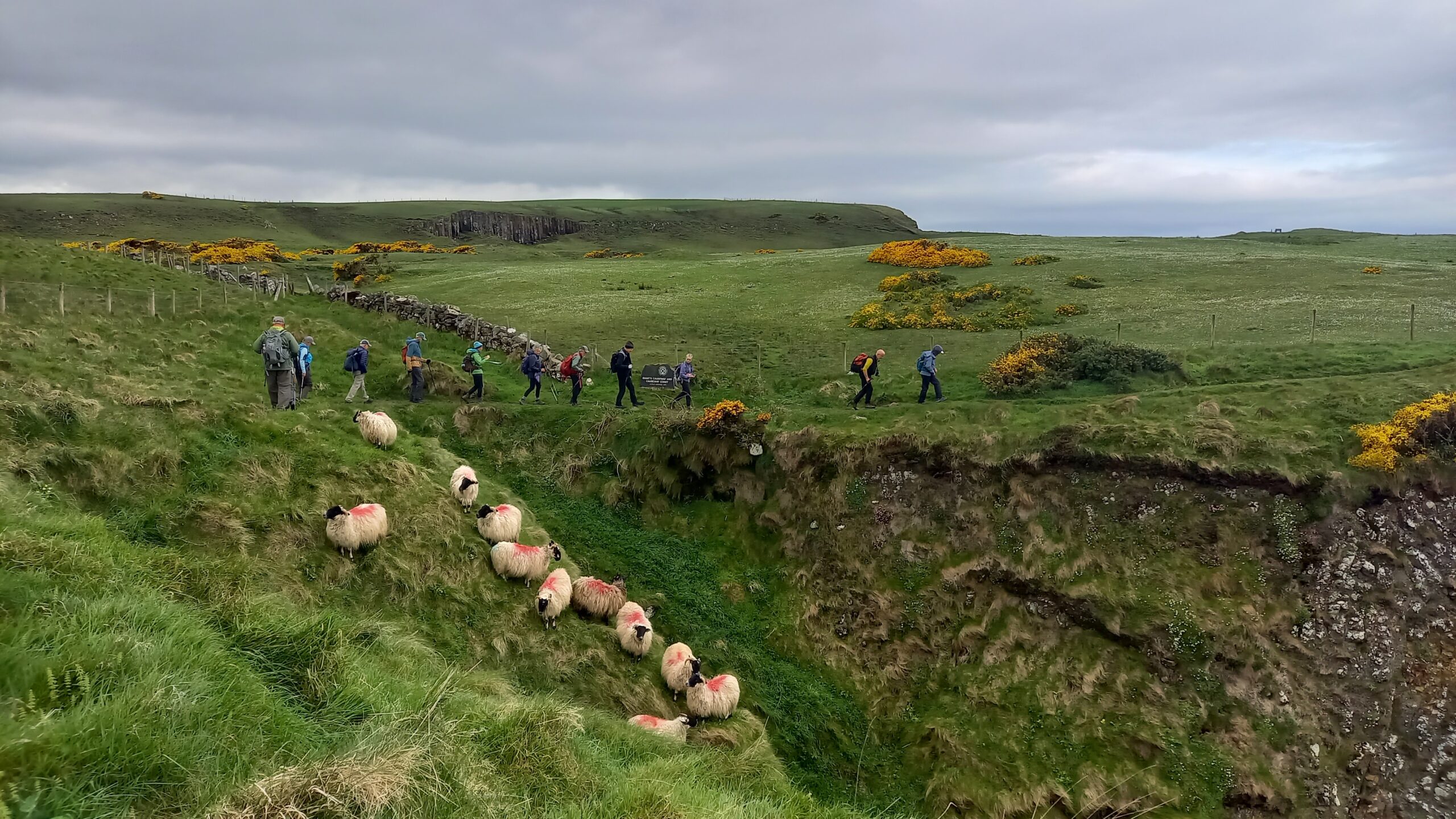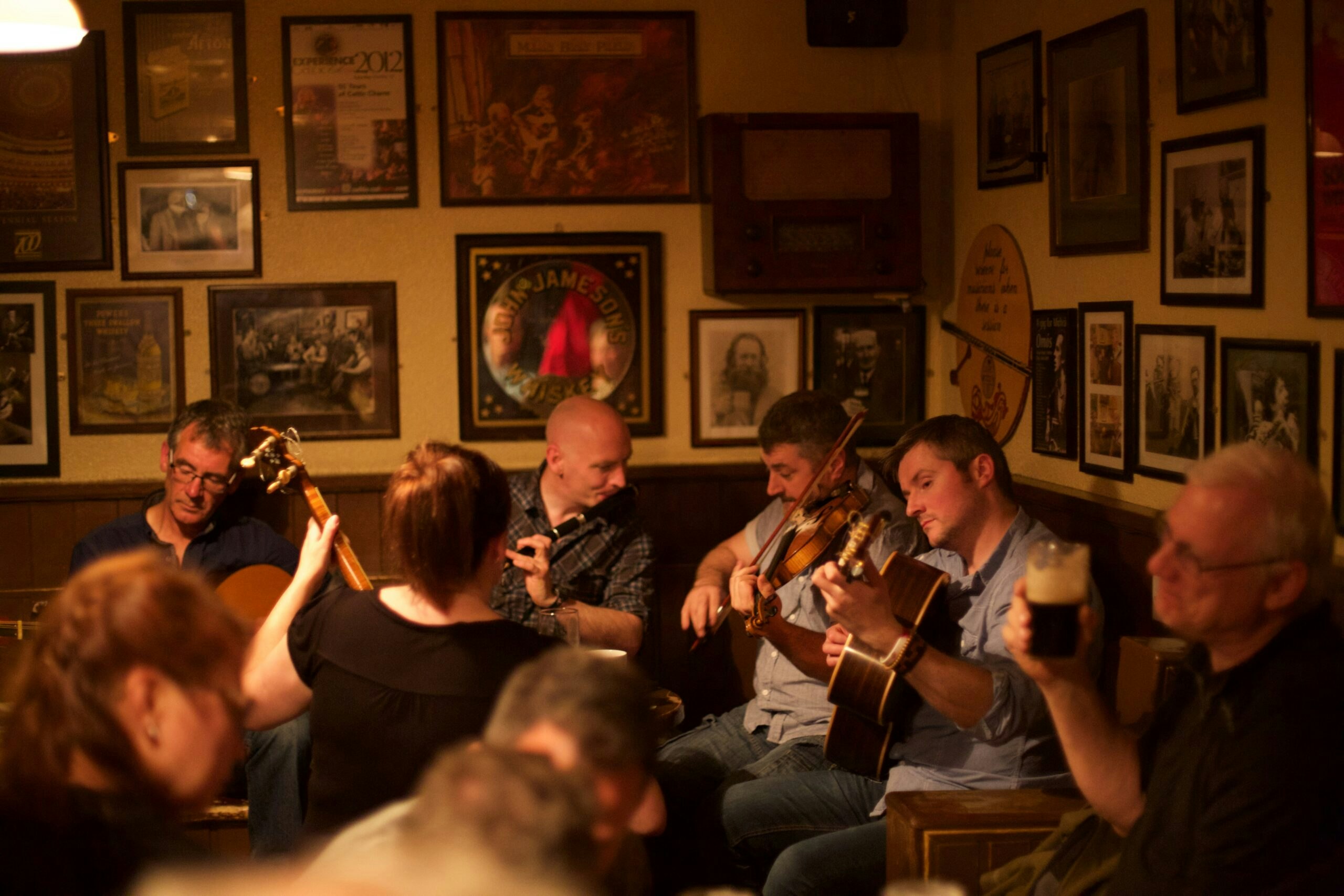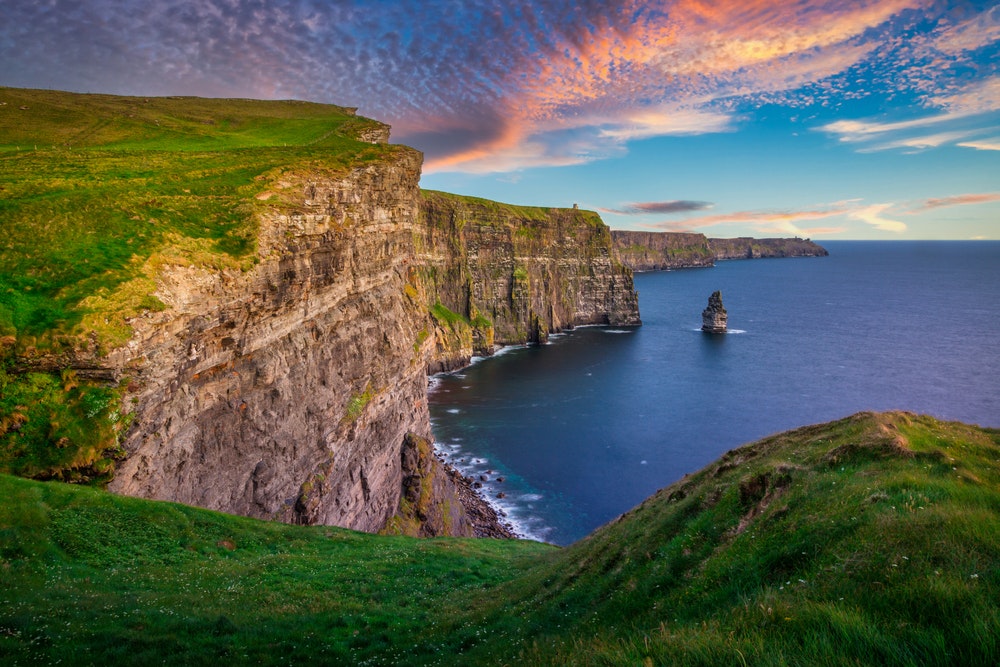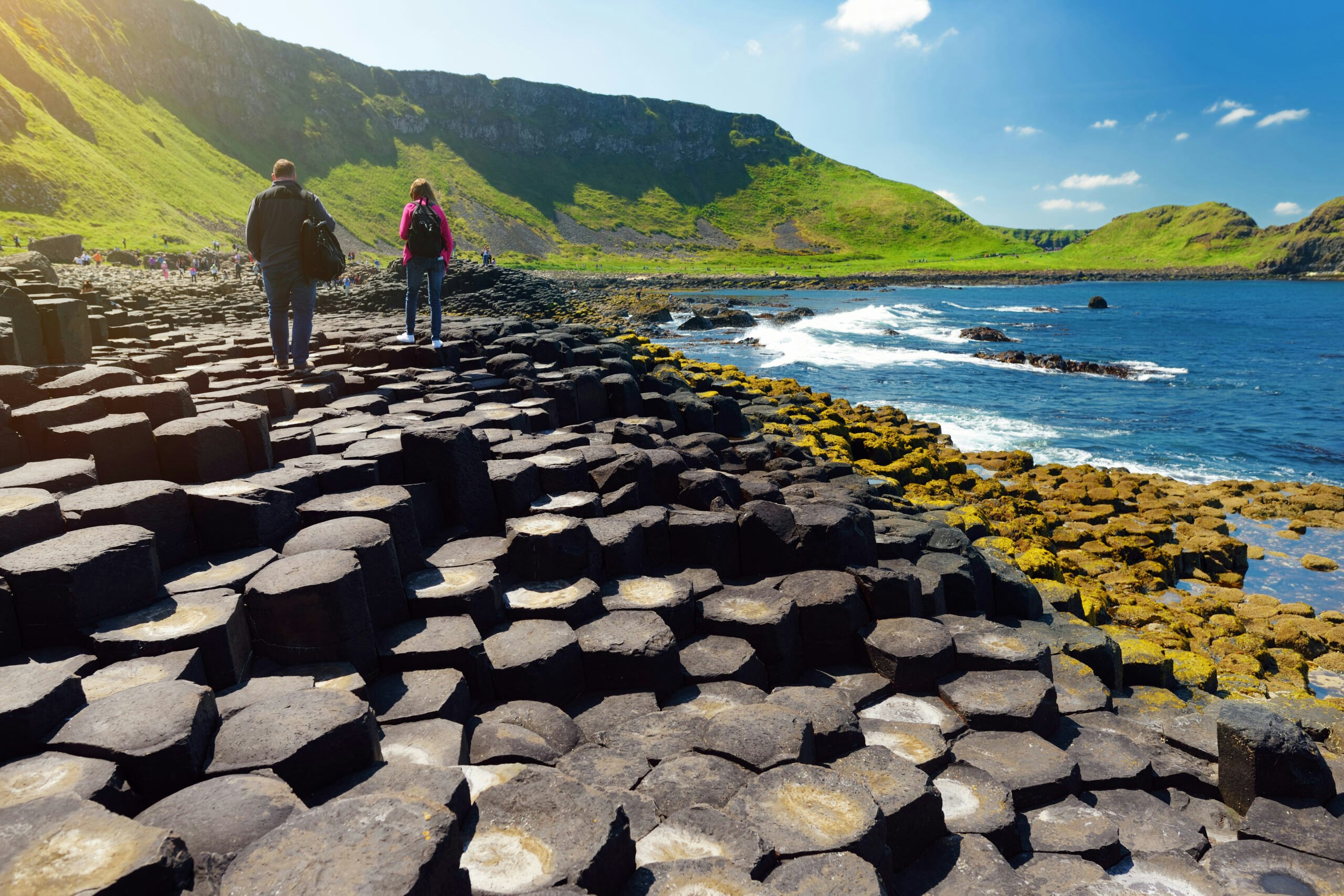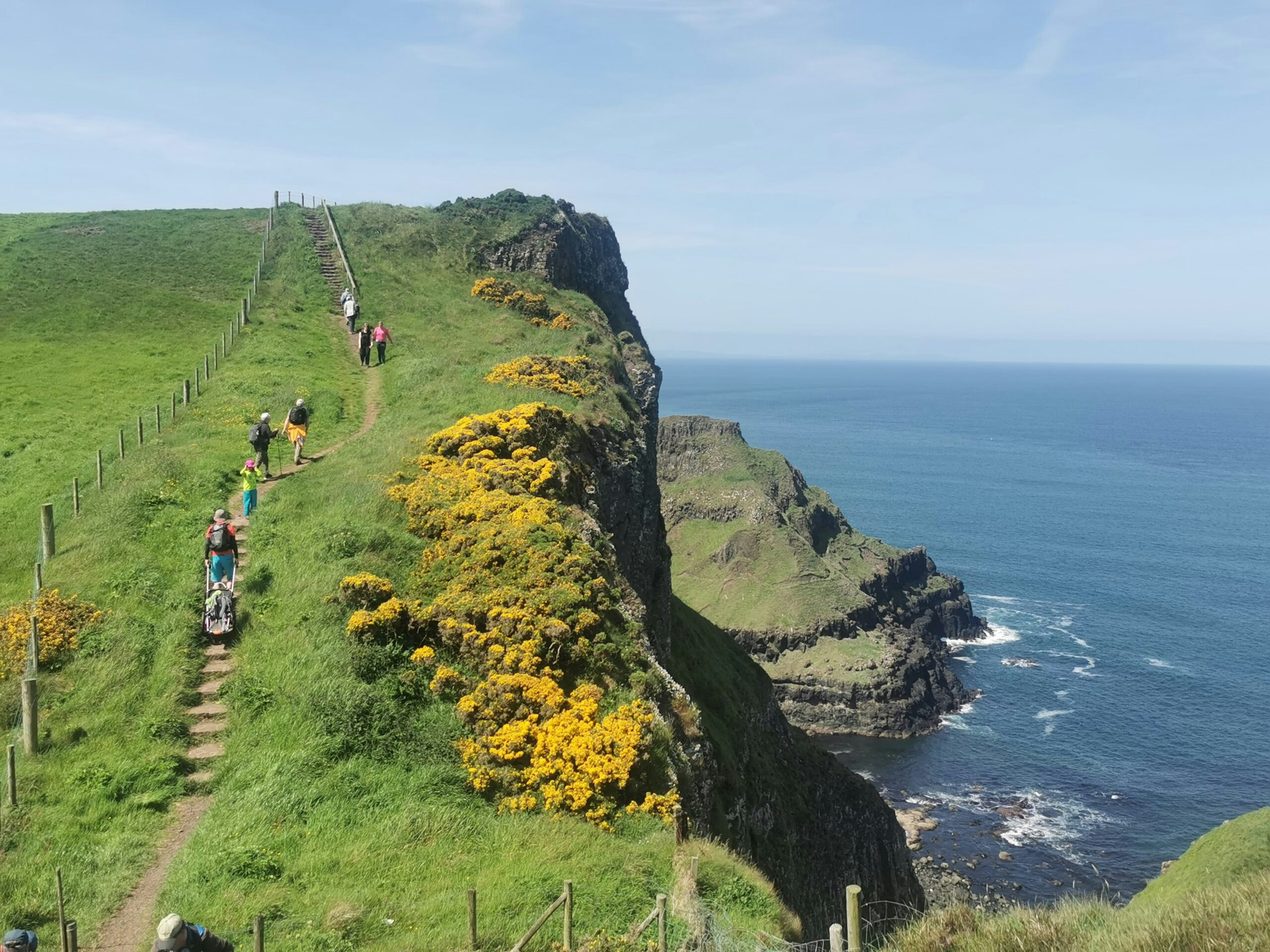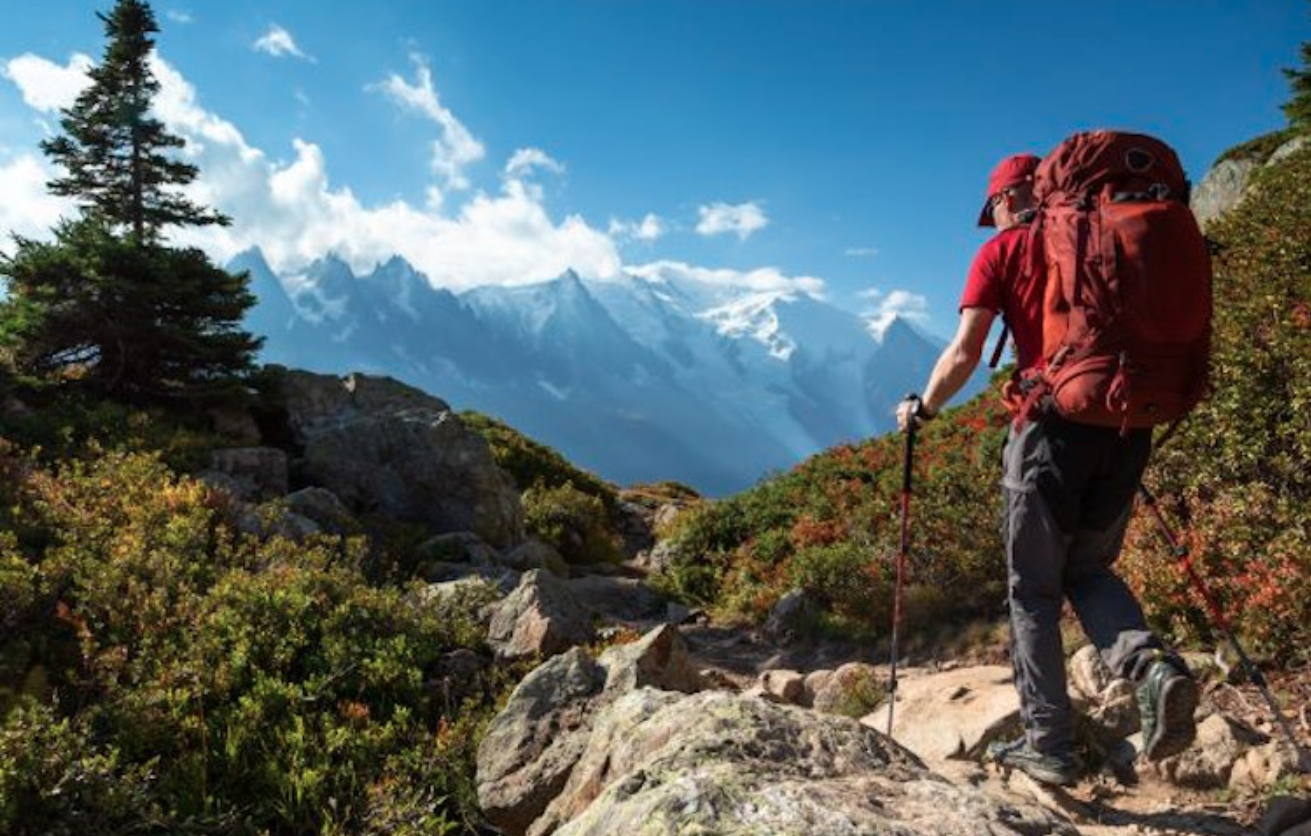Discover Ireland
With alluring natural beauty, friendliness, and ancient history, Ireland epitomizes its famous craic – fun and a good time. Whether it’s the myths and folktales that bend an ear through the generations, cozying up with a pint in an “old man pub” (as Dubliners call them), or setting off on an exhilarating hike on the Wild Atlantic Way, Ireland satisfies the wanderlust of city sophisticated, adventurers and history buffs, all in one compact and soul-stirringly beautiful destination.
Planning a trip to Ireland? Read our Ireland travel guide to find out when to visit, what to do, and much more to make your vacation unforgettable.
What is the best time to visit Ireland?
The best time to visit England is between late March and early June, or between September and November. These off-peak times avoid the highest visitor numbers. The countryside is particularly beautiful at these times of year, either as the flowers and trees start to bloom or, in the fall, when the leaves start to change color.
What is the best way to get to Ireland?
Flying is the best way to get to Ireland. Flights from the United States to Ireland average about 7 hours long. International airports include Dublin Airport, Cork Airport, Shannon Airport, and Ireland West Airport.
How to get around Ireland?
Driving is an excellent way to explore Ireland at one’s own pace. If you choose to drive a rental car in Ireland, keep in mind that cars drive on the left-hand side of the road. Signposts in Irish-speaking (Gaeltacht) areas are written in Gaelic. Drivers need a valid national driver’s license or an international driving permit.
Train travel is a good choice for intercity travel; most journeys within the country are under 2.5 hours long. Dublin and Belfast are the key rail hubs.
There are two in-country flight paths: Dublin-Kerry and Dublin-Donegal. The Connemara Regional Airport has flights to all three of the Aran Islands.
Ireland’s cities and most larger towns have dedicated bus services, both public and private.
Do I need a visa to visit Ireland?
American citizens do not need a visa to enter Ireland.
What are the top 5 places to visit in Ireland?
1. Dublin
Marrying history and hipness, lively Dublin has been named Europe’s friendliest city twice. Whether for a day, a weekend, or longer, this UNESCO City of Literature entertains art-and-culture seekers, pub aficionados, readers, film buffs, and foodies. More than 1,000 years of history emanate from the 18th-century parks, cobblestone alleys, and Georgian architecture. Nearby, outdoor enthusiasts can explore the UNESCO Biosphere of Dublin Bay on coastal walks that reveal rugged mountain views.
2. Cliffs of Moher
As staggering for its sheer rock face as for the beautiful sea views from atop the striated stone, the Cliffs of Moher are geologically astounding and the source of many an Irish folktale. Along the Wild Atlantic Way near Dingle, the cliffs jut out like the prow of a ship and extend to counties Cork and Kerry. The Doolin Cliff Walk follows the full length of the hiking trail right to a characterful visitor center set neatly into the hillside. Watch for countless puffins, razorbills, peregrine falcons, and kittiwakes.
3. Giant’s Causeway
It’s easy to see why the dramatic Giant’s Causeway was rated a top world destination by Lonely Planet. According to legend, a Scottish giant began hurling abuse across the English Channel at the Irish warrior, Fionn Mac Cumhaill. So the two giants could have a fistfight, Fionn built a causeway all the way to Scotland. The steep cliffs and 40,000 hexagonal basalt columns have inspired artists and piqued the curiosity of scientists for centuries.
4. Aran Islands
The three isolated, rocky Aran Islands are the keepers of traditional Irish language, culture, and music. The largest island, Inis Mor, is home to one of the most important prehistoric sites in Europe, Dun Aonghasa. This semi-circular stone fort sits atop a 328-foot drop to the churning sea below, offering mesmerizing views of Galway Bay, Connemara, and Black Head in the Burren.
5. Lakes of Killarney
Killarney National Park is home to several lakes, including the island-studded Lower Lake, on the banks of which are Muckross Abbey and Ross Castle, the Middle Lake, with the quaint Brickeen Bridge at the top of the peninsula, and Upper Lake, surrounded by lush forest of oak, holly, and mountain ash. One of the best walks in all of Ireland follows a stretch of the Iveragh Peninsula above the Lakes of Killarney, past Torc Waterfall and on to Torc Mountain.
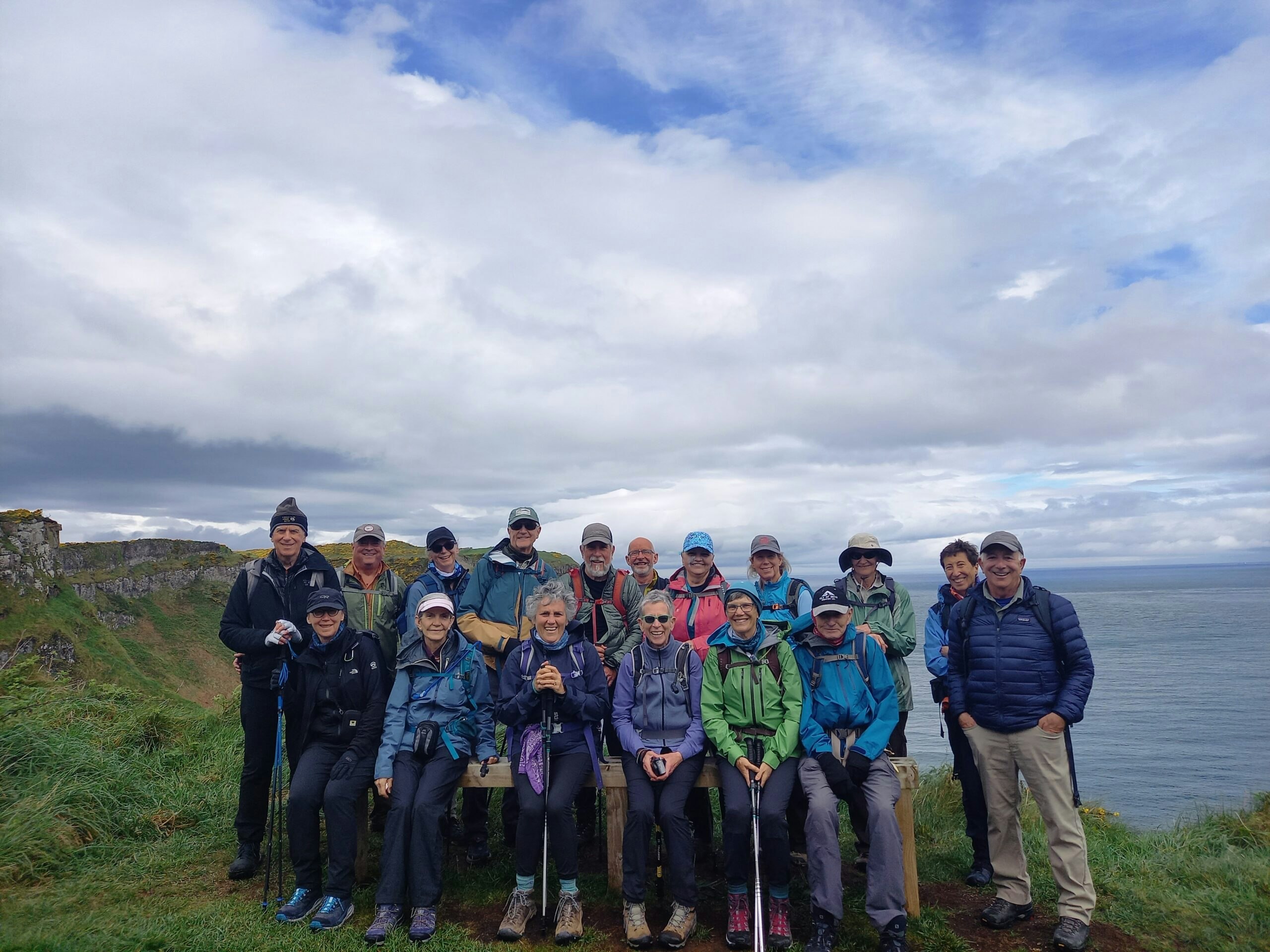
What are the best adventure tours in Ireland?
Ireland North to South Hiking Tour
Ireland’s legendary “Wild Atlantic Way” runs the length of the country, from the northernmost point at Inishowen Peninsula to Mizen Head in the south. On this epic Ireland hiking tour, traverse the most spectacular 70 miles of the 400-mile route. Walk along dramatic clifftops and white-sand beaches, taking in Ireland’s iconic sites, including the Giant’s Causeway, Donegal Town, the Aran Islands, the Cliffs of Moher, Dingle, and the Lakes of Killarney. With warm Irish hospitality, resident guides and a pint waiting at the end of each day, you may never want to go home!
Where are the best places to stay in Ireland?
From elegant historic hotels with gorgeous grounds to modern city hotels jam-packed with amenities, Ireland’s varied accommodations all feature warm, welcoming service. Go all out with an exclusive stay in a royal family’s summer palace, cozy up in a B&B, or feel one with nature, while being tucked away inside a romantic bubble dome in the countryside.
1. Westport Plaza Hotel – Westport
Located close to the town of Westport, the elegant Westport Plaza Hotel features spacious rooms, with a Jacuzzi bath and separate shower in the en suite bathroom. Savor sophisticated European food at the Merlot Restaurant, take a quick break at the Plaza Bar over cocktails, indulge in one of Spa Sula’s massages or facials, or unwind in its thermal suite.
2. Park House Hotel – Galway City
Sitting in the heart of Galway City right next to Eyre Square, Park House Hotel is a stone’s throw away from many attractions. The guest rooms are quiet, clean, and comfortable and The Park House is one of Galway’s most popular restaurants, offering full Irish breakfasts and scrumptious dinners. An extremely hospitable staff makes guests feel right at home.
3. Dingle Skellig Hotel & Spa – Dingle
Situated on the beautiful Dingle Peninsula, surrounded by rolling hills and the calm harbor, Dingle Skellig Hotel has offered travelers comfort, warm hospitality, and great service since 1969. After a day on the trail, wind down with a drink at Blaskets Bar or the Cocktail Bar. The Coastguard Restaurant serves locally sourced seafood overlooking the bay and the mountains.
4. Great Southern Killarney – Killarney
Opened in 1854, the Great Southern Killarney retains its elegant Victorian style and old-world charm. The luxurious rooms showcase a full spectrum of plush perks. Surrounded by delightful gardens, it serves locally sourced food at the Garden Room Restaurant, casual food and fine whiskies at The Punchbowl Bar, afternoon tea in the Grand Foyer, and drinks in the Killarney Wine Rooms.
7. Bishop’s Gate Hotel
Located within the historic Cathedral Quarter of Derry City, the Bishop’s Gate Hotel was built over 100 years ago and has maintained its traditional Edwardian architecture style. Each guestroom has modern amenities, such as satellite TV, a coffee maker and Wi-Fi, and has elegant accents to keep with the hotel’s heritage. Sip on champagne at The Wig bar or tea in the Hervey Library to unwind at the end of the day.
Things to know about Ireland
Think of Ireland in six distinct regions: Belfast, Dublin, the Ancient East, the heartlands, Northern Ireland, and the Wild Atlantic Way. The country’s compact size lends itself to varied sightseeing, as one can drive, take the train, or hop on a bus to most of Ireland’s most popular areas and attractions.
Drive the world’s longest defined coastal touring route – the Wild Atlantic Way, known for its soaring cliffs and charming little towns. Explore Belfast, brimming with cutting-edge restaurants, art galleries, artisan markets, and, of course, the world-class Titanic Belfast. Five thousand years of history emanate from the hills and tranquil River Shannon of the Ancient East. Scenic golf courses, the Causeway Coastal Route, and the mythical Sperrin Mountains round out Northern Ireland. From landscapes as old as time, to avant-garde art galleries, Ireland is a feast for the senses.
What is the language in Ireland?
English is the main language spoken in Ireland.
What to eat in Ireland?
Go beyond the potatoes – although they’re plentiful on menus throughout the country – and bring an appetite for some of the world’s finest beef, lamb, dairy, seafood, and butter.
Don’t miss Ireland’s famous beef stew, a savory concoction of mutton or lamb, carrots, potatoes, and onions. Order an Irish Ulster fry-up breakfast and you’ll get drisheen, a black pudding made from cow, sheep or pig blood, and tripe, cow’s stomach slow cooked in milk with onion – all served alongside sausages, bacon, tomatoes, eggs, and potato farl.
Try boxty, a traditional potato pancake, typically served with ham hock and cabbage or seafood and dill. Dublin coddle is a dish dating back to the 1770s, still filling up diners with a heaping bowl of bacon, sausages, onion, and potato. Save room for cockles and mussels, home-smoked salmon, and blaa, a soft bread roll, particularly delicious with dry-cured bacon.
What is the currency in Ireland?
The Republic of Ireland uses the euro (EUR), while Northern Ireland uses the pound sterling (GBP), as it is part of the United Kingdom. One pound sterling equals 100 pence.
Money can be exchanged at the airport upon arrival (be sure to keep your receipts in case you need to exchange back on departure) or is widely available to withdraw from ATMs. Major credit cards such as Visa, MasterCard, and American Express are accepted throughout the country.
What is the electricity in Ireland?
In Ireland, the power plug sockets are of type G. The standard voltage is 230 V and the frequency is 50 Hz. Check the voltage on your personal electronics chargers to determine if you need a voltage converter. A good resource to see images of plug types is www.power-plugs-sockets.com.
What is the time zone in Ireland?
Ireland uses Greenwich Mean Time (GMT). During the summer it becomes GMT+1 (Irish Standard Time or IST) in the Republic and British Summer Time (BST) in Northern Ireland.
BST and IST start from 01:00 GMT on the last Sunday of March until 01:00 GMT on the last Sunday of October.
What to wear in Ireland?
Ireland’s climate is milder than one might think, with an average yearly temperature around 50 degrees Fahrenheit. It’s always prudent to expect rain any time of year. Dressing in layers is the key to staying comfortable. Pack an umbrella, a warm sweater or light fleece, a waterproof jacket, and comfortable walking shoes.
For winter travel, bring an insulated coat, scarf, gloves, hat, woolen socks, and warm shoes or insulated boots.
